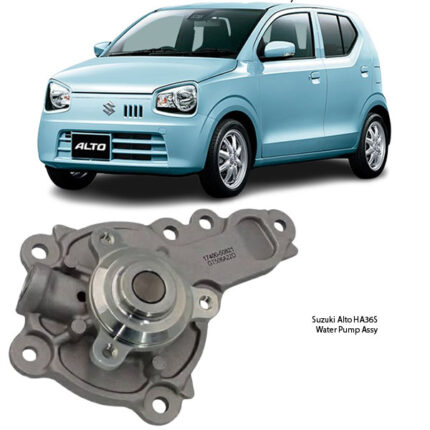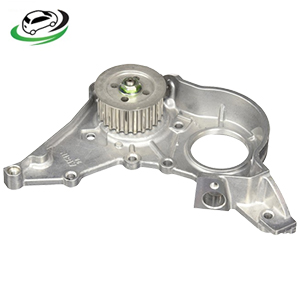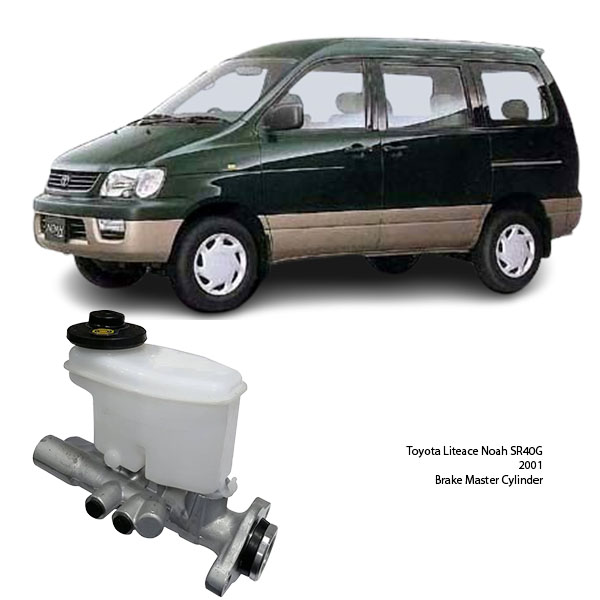-10%
Get Toyota Liteace Noah SR40G 2001 Brake Master Cylinder 47201-28480 in Kenya
The brake master cylinder is a crucial component of a vehicle’s braking system. It acts as the heart of the hydraulic braking system, converting the force applied on the brake pedal into hydraulic pressure. This pressure is then transmitted through the brake lines to the calipers or wheel cylinders, ultimately slowing or stopping the vehicle.
Understanding the brake master cylinder’s function, types, symptoms of failure, and maintenance can help ensure optimal braking performance and vehicle safety. This detailed guide explores the role of the master cylinder, its types, common issues, replacement procedures, and maintenance tips.
1. Function of the Brake Master Cylinder
The brake master cylinder serves as a hydraulic pump that generates and distributes braking force. When the driver presses the brake pedal, the master cylinder pressurizes the brake fluid and directs it to the brake calipers (disc brakes) or wheel cylinders (drum brakes).
How It Works
- Pedal Movement: When the driver presses the brake pedal, it pushes a piston inside the master cylinder.
- Fluid Pressurization: This movement forces brake fluid through the brake lines, creating hydraulic pressure.
- Brake Application: The pressure activates the brake calipers (or wheel cylinders), pressing the brake pads or shoes against the rotors or drums.
- Brake Release: When the pedal is released, the fluid returns to the reservoir, releasing the brake force.
This process happens in milliseconds, allowing for quick and efficient braking.
2. Components of a Brake Master Cylinder
A typical brake master cylinder consists of the following key parts:
A. Reservoir
- Stores brake fluid and supplies it to the hydraulic system.
- Usually made of plastic and mounted on top of the master cylinder.
B. Piston Assembly
- Converts mechanical force from the brake pedal into hydraulic pressure.
- Moves inside the cylinder bore when braking force is applied.
C. Cylinder Bore
- The internal chamber where the pistons move to pressurize the brake fluid.
D. Pressure Ports and Outlets
- Connects the master cylinder to the brake lines, distributing fluid to different wheels.
E. Return Springs
- Helps return the piston to its original position when the brake pedal is released.
F. Seals and O-Rings
- Prevent fluid leakage and maintain hydraulic pressure.
3. Types of Brake Master Cylinders
A. Single-Circuit Master Cylinder
- Found in older vehicles.
- Has only one pressure chamber and a single hydraulic circuit.
- If it fails, the entire braking system is compromised.
B. Dual-Circuit (Tandem) Master Cylinder
- Common in modern vehicles.
- Has two separate hydraulic circuits, one for the front brakes and one for the rear.
- If one circuit fails, the other still functions, improving safety.
C. Step-Bore Master Cylinder
- Uses two different-sized pistons for better brake pressure distribution.
- Enhances braking efficiency and responsiveness.
D. Quick Take-Up Master Cylinder
- Designed for vehicles with low-drag disc brakes.
- Allows faster fluid movement for quicker brake engagement.
4. Symptoms of a Failing Brake Master Cylinder
A faulty master cylinder can lead to dangerous braking issues. Here are common signs of failure:
A. Spongy or Soft Brake Pedal
- If the brake pedal feels soft or sinks to the floor, the master cylinder may be leaking or have internal seal failure.
B. Brake Fluid Leaks
- Visible leaks around the master cylinder or on the firewall indicate a failing unit.
C. Reduced Braking Power
- If the vehicle takes longer to stop, the master cylinder may not be generating enough pressure.
D. Warning Lights on Dashboard
- The brake warning light or ABS light may illuminate due to low fluid pressure.
E. Contaminated Brake Fluid
- Dirty or dark-colored brake fluid inside the reservoir indicates internal wear or corrosion.
F. Inconsistent Brake Performance
- Brakes may engage unpredictably or require more effort to stop the vehicle.
5. Causes of Brake Master Cylinder Failure
A. Worn Seals
- Over time, seals inside the master cylinder can wear out, causing fluid leaks and pressure loss.
B. Contaminated Brake Fluid
- Moisture and debris in the fluid can cause internal corrosion and affect the master cylinder’s operation.
C. Air in the Brake System
- If air enters the hydraulic system, it reduces braking efficiency and causes a spongy pedal.
D. Excessive Heat and Wear
- Continuous heavy braking can generate excessive heat, leading to faster deterioration of internal components.
6. How to Replace a Brake Master Cylinder
If the master cylinder is failing, replacing it promptly is essential for safety.
Tools Required:
- Wrench set
- Brake fluid
- Brake bleeder kit
- Screwdriver
- Brake cleaner
Replacement Steps:
Step 1: Prepare the Vehicle
- Park on a level surface and engage the parking brake.
- Open the hood and locate the master cylinder (usually near the firewall).
Step 2: Remove Old Brake Fluid
- Use a turkey baster or fluid pump to remove old brake fluid from the reservoir.
Step 3: Disconnect Brake Lines
- Use a wrench to loosen and remove the brake lines connected to the master cylinder.
Step 4: Remove the Master Cylinder
- Unbolt the master cylinder from the brake booster or firewall.
- Carefully remove it without spilling any remaining brake fluid.
Step 5: Install the New Master Cylinder
- Position the new master cylinder and secure it with bolts.
- Reconnect the brake lines and ensure a tight fit.
Step 6: Bleed the Brake System
- Fill the reservoir with fresh brake fluid.
- Bleed the brakes to remove air bubbles, starting with the wheel furthest from the master cylinder.
Step 7: Test the Brakes
- Press the brake pedal multiple times to ensure proper function.
- Check for leaks and take a short test drive.
7. Maintenance Tips for Long-Lasting Performance
A. Check Brake Fluid Regularly
- Inspect fluid levels every few months and top up if necessary.
B. Use the Correct Brake Fluid
- Always use the recommended DOT brake fluid specified in your vehicle’s manual.
C. Bleed Brakes Periodically
- Remove air bubbles from the brake system every 2-3 years for optimal performance.
D. Avoid Contaminating Brake Fluid
- Keep the reservoir cap sealed and avoid introducing dirt or moisture.
E. Inspect Brake Lines and Seals
- Check for leaks or worn-out seals that can affect hydraulic pressure.
Conclusion
The brake master cylinder is a critical component that ensures effective braking by converting pedal force into hydraulic pressure. A well-maintained master cylinder provides smooth and reliable braking, improving vehicle safety.
Follow us on Facebook for more parts.



